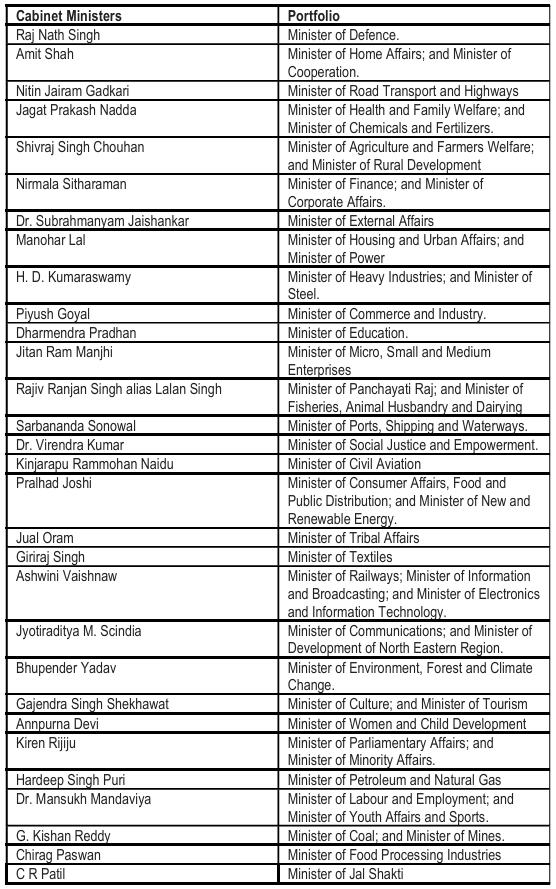On 9 June, Prime Minister Narendra Modi, along with 71 ministers, took the oath of office to form the new coalition government. President Droupadi Murmu administered the oath to the incoming ministers. The new cabinet comprises the Prime Minister, 30 Cabinet Ministers, five Ministers of State with independent charge, and 36 Ministers of State.
In a move signaling continuity, the Modi 3.0 government has arrived with the BJP maintaining control over the ‘Big 4’ ministries: Finance, External Affairs, Defence, and Home. Prime Minister Modi retained key ministers Amit Shah, Rajnath Singh, Nirmala Sitharaman, and S Jaishankar in their respective high-profile roles—Home, Defence, Finance, and External Affairs respectively. These ministers form the crucial Cabinet Committee on Security, headed by the Prime Minister.
Among the new entrants to the Union Cabinet, former Madhya Pradesh Chief Minister Shivraj Singh Chouhan has been assigned the Agriculture and Rural Development Ministries. BJP president JP Nadda has returned to the Health Ministry, a portfolio he previously held during Modi’s first term before assuming leadership of the BJP.

President Droupadi Murmu directed the allocation of portfolios to the 72 members of the Union Council of Ministers, including the Prime Minister, based on Modi’s advice, according to an official statement.
After being sworn in as Prime Minister for the third time, Narendra Modi signed his first file on 10 June, authorizing the release of the 17th installment of the PM Kisan Nidhi.
Upon signing the file, PM Modi stated, “Ours is a Government fully committed to Kisan Kalyan. It is therefore fitting that the first file signed on taking charge is related to farmer welfare. We want to keep working even more for the farmers and the agriculture sector in the times to come.”
